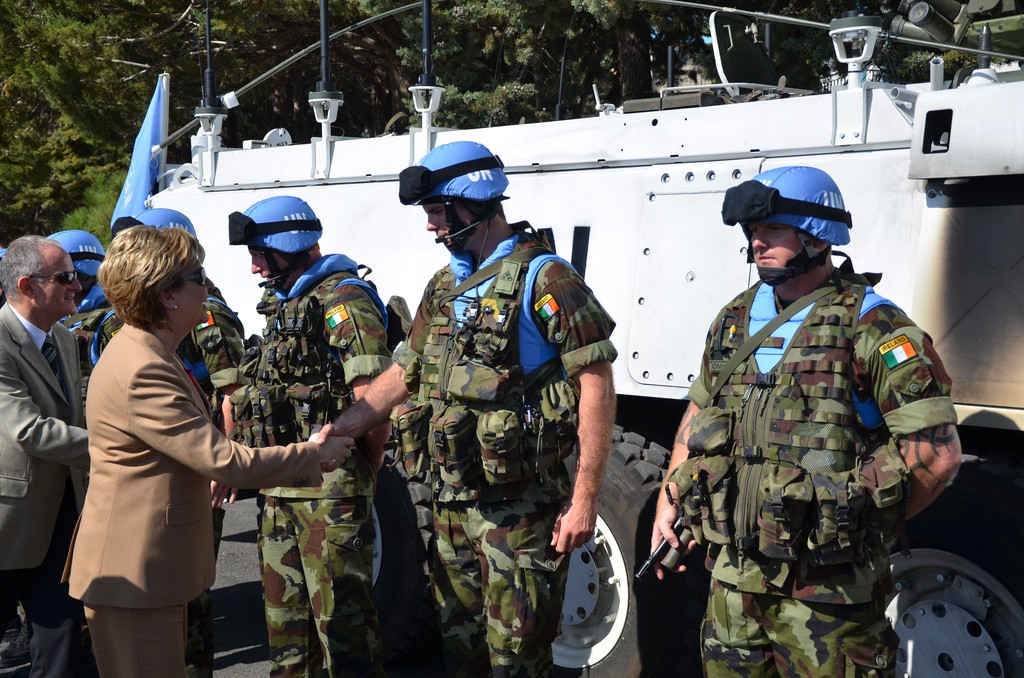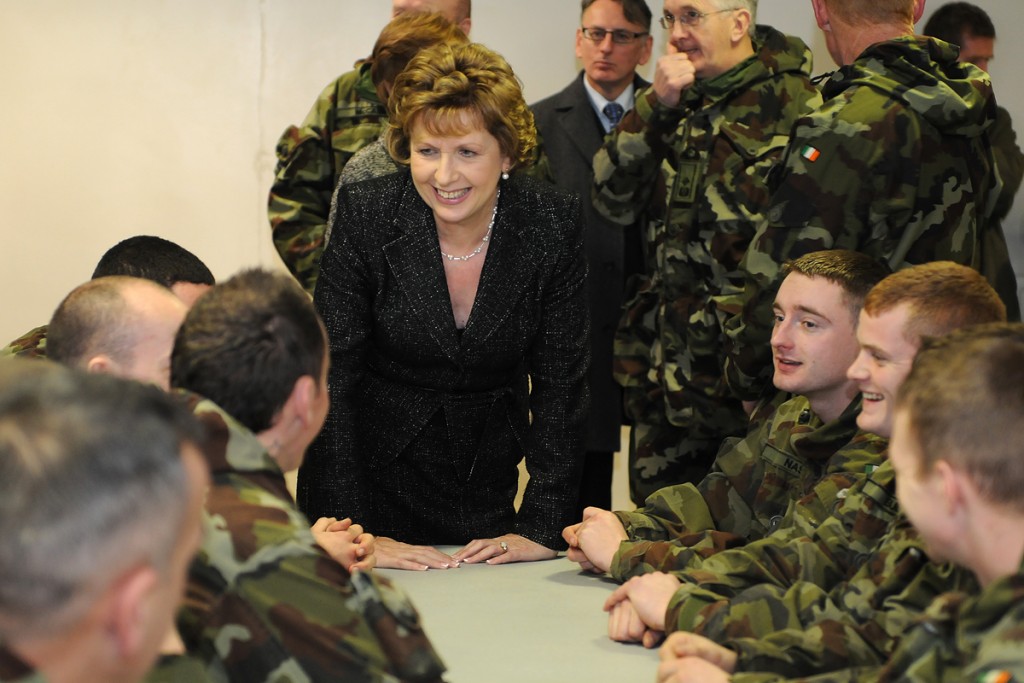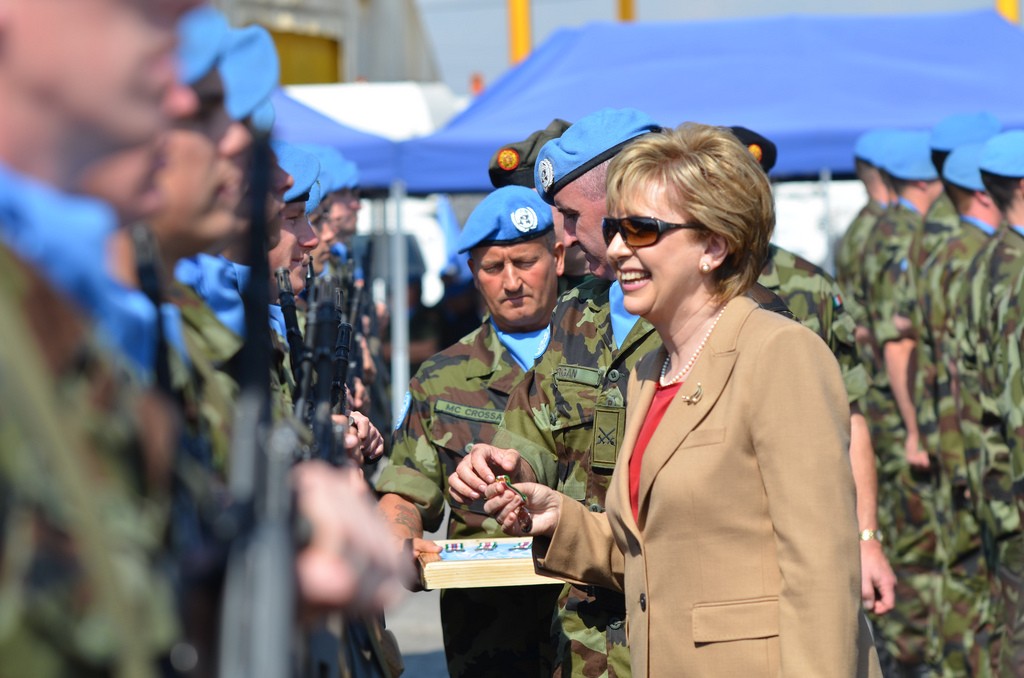As previously published in An Cosantóir in July 2011 issue.
By Paul O’Brien – Photos by Cpl Greg Dorney & Cpl Neville Coughlan
In the first two-days of Queen Elizabeth II’s state visit the British monarch took part in wreath-laying ceremonies with President Mary McAleese at the Garden of Remembrance and the Irish National War Memorial. Many people who watched these moving ceremonies on television were probably not familiar with the history of these gardens.
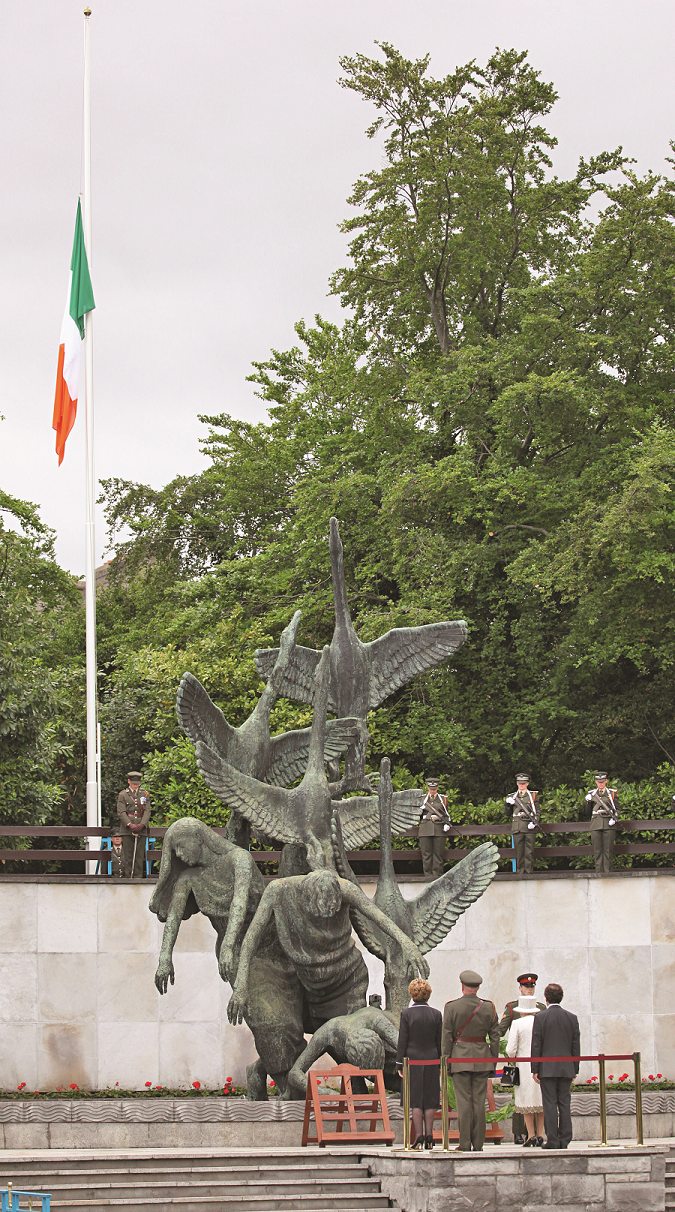
Located in Parnell Square, at the northern end of O’Connell Street, the Garden of Remembrance is dedicated to the memory of all those who gave their lives in the cause of Irish freedom.
In 1935 the government acquiesced to a request from the Dublin Brigade Veterans Association that a remembrance memorial should be constructed in Dublin city. Part of the Rotunda Gardens in Parnell Square was chosen as the site due to its historical significance: the Irish Volunteer movement was founded in the nearby Rotunda in 1913 and it was within these gardens that many of those taken prisoner after the 1916 Rising were kept overnight before being moved to Richmond Barracks and Kilmainham Gaol.
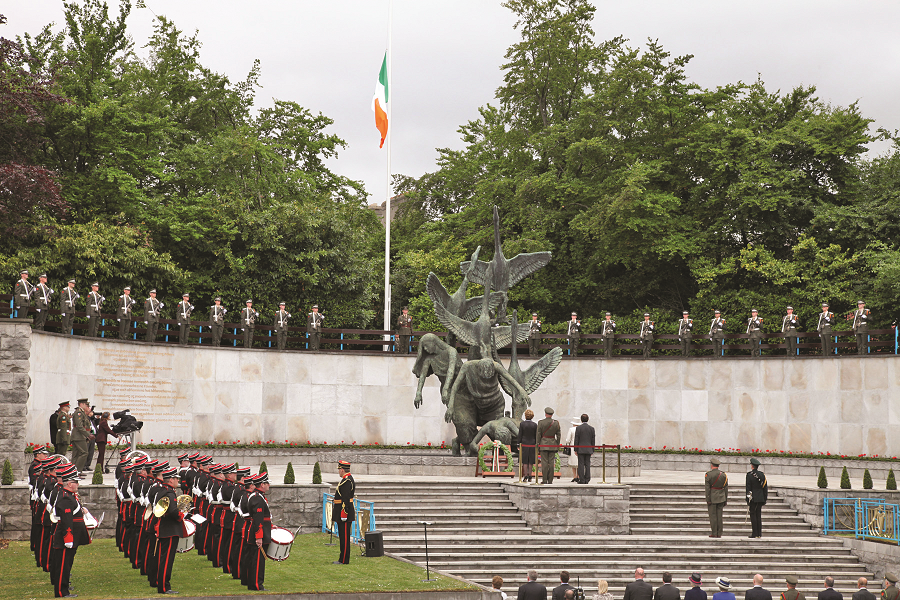
Although the new garden was designed by Daithí P Hanlon as early as 1946, its construction only commenced in 1961. It is cruciform in shape and has a curving twelve-foot high, marble wall enclosing it from the rear. Access to the central pedestrian area is via a descending flight of steps that lead to a tranquil pool. The bed of the pool is decorated in a mosaic pattern of blue-green waves interspersed with weapons from Ireland’s Heroic Age. The weapons are depicted as broken because according to Celtic custom weapons were broken and cast in to the river at the end of a battle. As well as signifying the end of hostilities, many believe this was a votive offering to the gods for victory.
The railings surrounding the lawns are decorated with cast designs of the Loughnashade Trumpet and the Ballinderry Sword, all of which are pointing downwards to indicate peace.
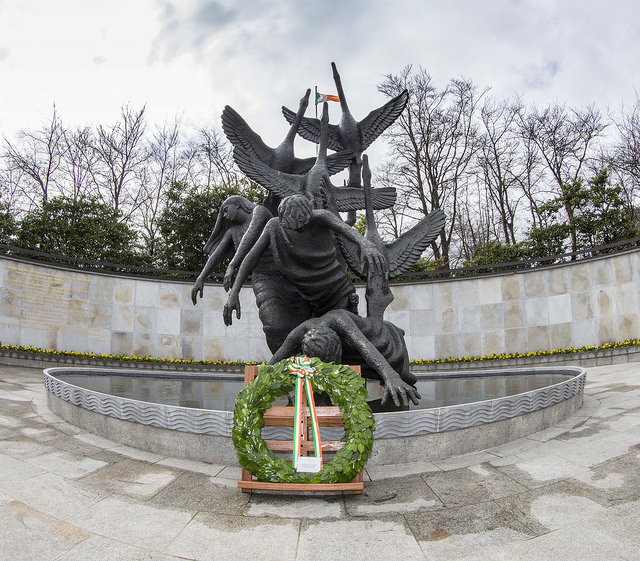
The centrepiece, Oisín Kelly’s eight-ton, 25-foot high, bronze sculpture of the Children of Lir, cast at the Marinelli foundry in Florence, Italy, was inspired by WB Yeats’s poem ‘1916’. The concept was that at certain points in history people are transformed and the artist used the depiction of human figures transforming into swans, symbolising rebirth, victory and resurrection, as in the mythological tale of the Children of Lir.
On the wall a poem entitled ‘We saw a Vision’, by Liam Mac Uistin, reads:-
In the darkness we saw a vision.
We lit the light of hope and it was not extinguished.
In the desert of discouragement we saw a vision.
We planted the tree of valour and it blossomed
In the winter of bondage we saw a vision.
We melted the snow of lethargy and the river of resurrection flowed from it.
We sent our vision aswim like a swan on the river. The vision became a reality.
Winter became summer. Bondage became freedom and this we left to you as your inheritance.
O generations of freedom remember us, the generations of the vision.
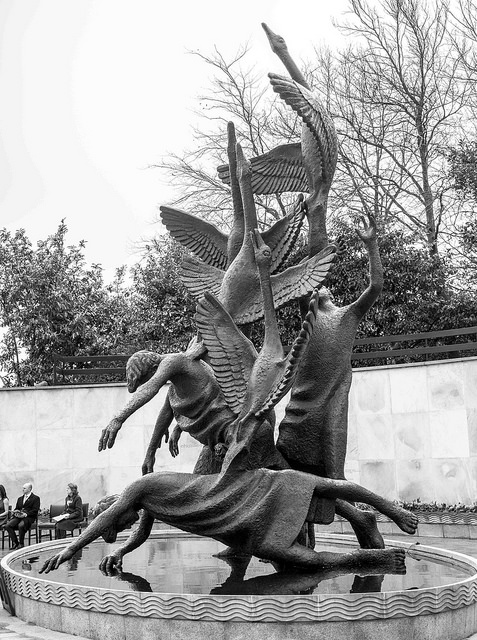
President Eamon De Valera officially opened the Garden of Remembrance on Easter Monday, 1966, the golden jubilee of the 1916 Rising. The Office of Public Works (OPW) maintains the gardens.
Paul O’Brien is a military historian and published author, his website is: www.paulobrienauthor.ie
Read these stories and more in An Cosantóir (The Defender), The official magazine of the Irish Defence Forces – www.dfmagazine.ie
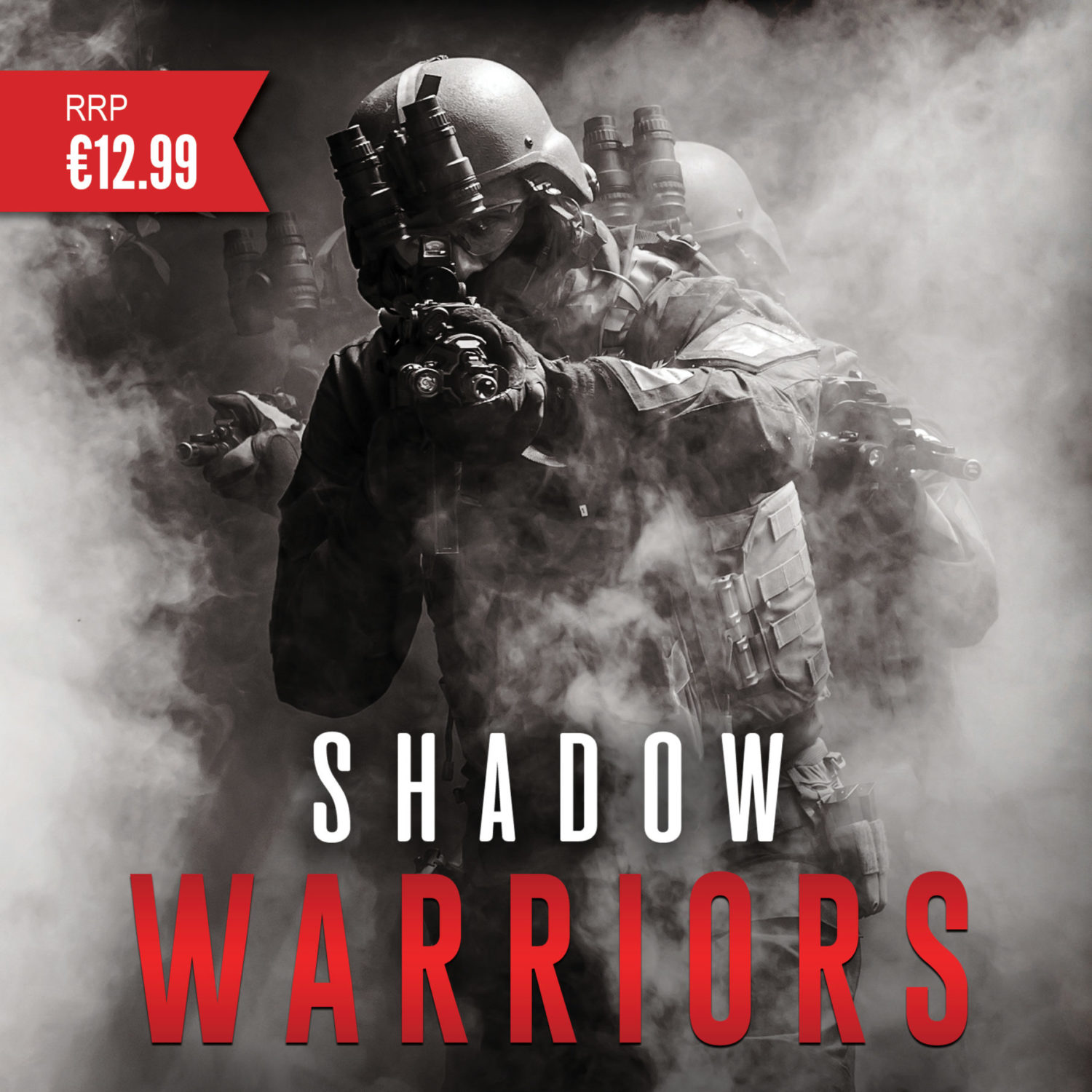
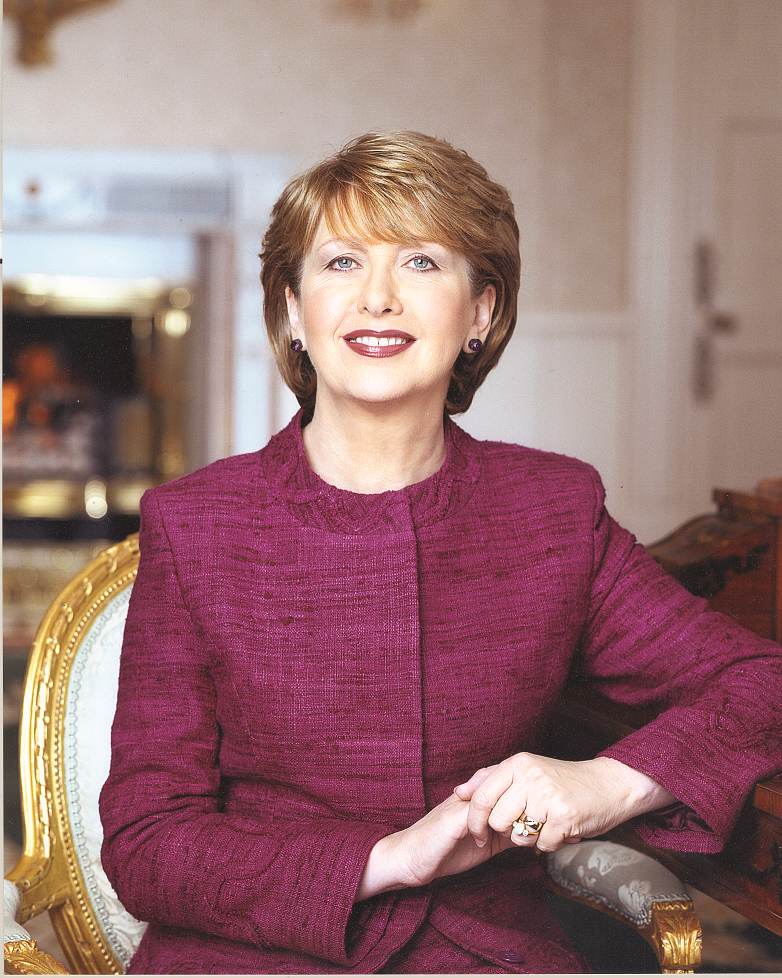 After her recent visit to Lebanon and coming in to her last few weeks in office after her great tenure of service to our nation, the president spoke briefly to An Cosantóir about her memories of the Defence Forces.
After her recent visit to Lebanon and coming in to her last few weeks in office after her great tenure of service to our nation, the president spoke briefly to An Cosantóir about her memories of the Defence Forces.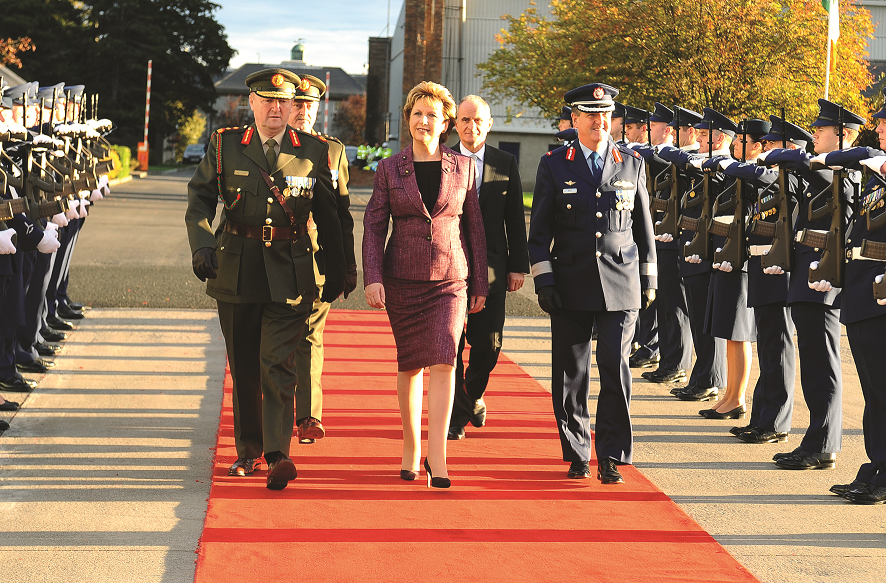 Operational command of the Defence Forces is vested in the Minister and the Government but the Supreme Command of the Defence Forces is vested in the President – a role often referred to as Commander in Chief and one that I was anxious to signify by developing an active relationship with the Defence Forces both at home and abroad. The staff in the Aras ADC’s office have become my friends and colleagues these past fourteen years and of course members of the Defence Forces have played a central role in all the ceremonial duties of the Presidency. I had regular meetings and briefings with various Chief’s of Staff, visited many barracks, accompanied the troops twice on their Military Pilgrimages to Lourdes, invited retired members of the Defence Forces and families of serving soldiers to the Aras, took part in commemoration ceremonies, was transported safely to various destinations by the Air Corps and was particularly proud to be the first President to visit our troops serving overseas with the United Nations, of Ireland’s most important national engagements with the wider world is our peacekeeping work with the United Nations. Ireland’s Defence Forces have served for over fifty years with outstanding distinction and considerable sacrifice. I wanted to honour and draw attention to that work and so my first and last foreign visits as President were to Irish troops serving in Lebanon, where forty seven of our troops died in the service of peace, more than any of the other foreign armies serving there. It has been an abiding theme of my Presidency to acknowledge the immense contribution of our Defence Forces since the foundation of the State.
Operational command of the Defence Forces is vested in the Minister and the Government but the Supreme Command of the Defence Forces is vested in the President – a role often referred to as Commander in Chief and one that I was anxious to signify by developing an active relationship with the Defence Forces both at home and abroad. The staff in the Aras ADC’s office have become my friends and colleagues these past fourteen years and of course members of the Defence Forces have played a central role in all the ceremonial duties of the Presidency. I had regular meetings and briefings with various Chief’s of Staff, visited many barracks, accompanied the troops twice on their Military Pilgrimages to Lourdes, invited retired members of the Defence Forces and families of serving soldiers to the Aras, took part in commemoration ceremonies, was transported safely to various destinations by the Air Corps and was particularly proud to be the first President to visit our troops serving overseas with the United Nations, of Ireland’s most important national engagements with the wider world is our peacekeeping work with the United Nations. Ireland’s Defence Forces have served for over fifty years with outstanding distinction and considerable sacrifice. I wanted to honour and draw attention to that work and so my first and last foreign visits as President were to Irish troops serving in Lebanon, where forty seven of our troops died in the service of peace, more than any of the other foreign armies serving there. It has been an abiding theme of my Presidency to acknowledge the immense contribution of our Defence Forces since the foundation of the State.